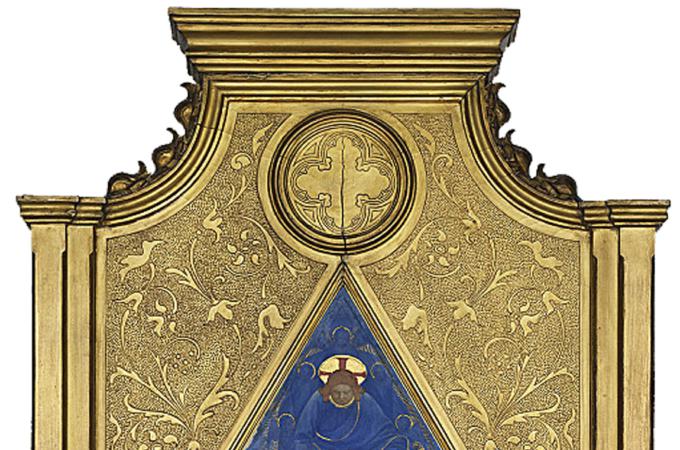Fra Angelico works reunited for Gardner Museum exhibit
CAMBRIDGE -- For the first time in history, four reliquaries created by the famed early Renaissance painter Fra Angelico will be displayed together at the Isabella Stewart Gardner Museum in Boston.
The exhibit "Fra Angelico: Heaven on Earth" open Feb. 22 through May 20, will reunite Fra Angelico's "Assumption and Dormition of the Virgin," acquired by Gardner in 1899, with three companion pieces from the Museo di San Marco, in Florence, Italy. The pieces, all newly restored, depict the life of the Virgin Mary.
"This is a very special show," said Gianfranco Pocobene, Chief Conservator of the Isabella Stewart Gardner Museum. The reliquaries were separated over 200 years ago, he explained, and "this is the first time they've been reunited in all that time."
Pocobene spoke to The Pilot prior to a lecture on the piece and its restoration sponsored by the New England Chapter of the Patrons of the Arts in the Vatican Museums held in Cambridge Feb. 18.
Painting in the 15th century during the early Italian Renaissance, Fra Angelico, born Guido di Pietro, was regarded as a pioneer in the art world. During a time when new art styles were emerging, Fra Angelico, a member of the Domincan Order, exhibited technical skill and ingenuity, and helped transform Western art.
Most of his work included frescoes and altarpieces for churches in Italy, although, over the years, many of his pieces have been lost to history or destroyed. The four pieces -- "The Annunciation and Adoration of the Magi," "The Coronation of the Virgin," "The Madonna della Stella," and the "Assumption and Dormition of the Virgin" were created during the 1420s and 1430s for Santa Maria Novella Church in Florence, before they were separated.
Though created as reliquaries, containers for scared relics, over the years the pieces were modified to more resemble paintings as the changed hands among different collectors, Pocobene explained.
"But," he said, "we've learned really tremendous things about this object -- what its original shape looked like and what happened to it over the last 200 years" -- all of which went into consideration when restoring the pieces and planning the exhibit.
Typically, he said, the "Assumption and Dormition of the Virgin" hangs in the museum's Early Italian Room, high up on the wall. For the exhibit, however, it and its companion pieces are displayed on a pedestal, so that it may be experienced as a three-dimensional object.
"To be able to get quite close to it in a way you can't usually in a museum is really an extraordinary experience," he said. "The attention to detail, the love that he has for the forms that he does on the painting, is just over the top, just beautiful."
Fra Angelico really "was the great painter of the Early Renaissance," Pocobene said. "That's why they called him 'il Beato,' the blessed Angelico. His name got changed because he was so good."
Looking at the pieces, they "make you realize that this really conveyed a message to people going to church," he said. When Fra Angelico lived, people "weren't reading much, they were illiterate, but the power of an image like that is a significant thing in religious art" to convey messages of the Catholic Church.



















